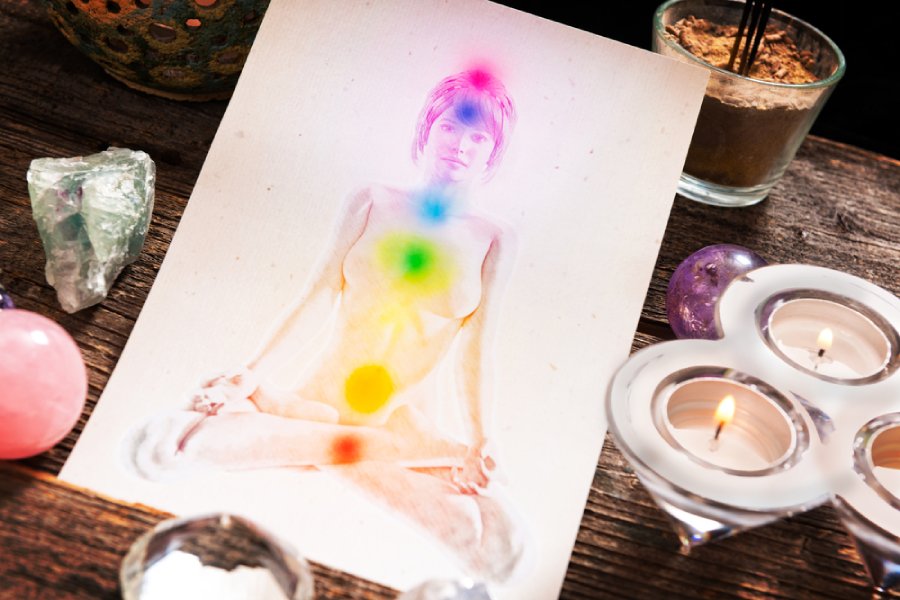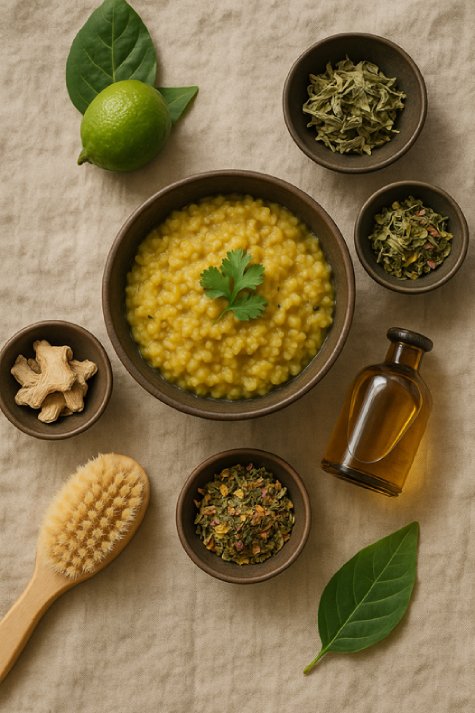
Exploring the Healing Benefits of an Ayurvedic Cleanse
By Vrinda Devani
An Ayurvedic cleanse offers a gentle, holistic way to support your body, mind, and emotions by creating space for renewal and balance. Rooted in ancient wisdom, this practice goes beyond detoxing to help you reconnect with your natural rhythms and inner clarity.
- Simplifies digestion with kitchari, herbal teas, and supportive self-care practices.
- Calms the nervous system through abhyanga (oil massage), yoga, and mindful slowing down.
- Clears mental clutter with meditation, breathwork, journaling, and digital detox.
- Opens emotional and energetic channels, especially in the heart and lung chakras.
- Aligns with seasonal transitions or times of imbalance for optimal benefits.
- Panchakarma retreats, like those at SoHum Mountain Healing Resort, provide the deepest cleansing experience.
In the quiet spaces between commitments and obligations, many of us begin to feel the call for renewal. An ayurvedic cleanse offers a way to respond to that call with presence and care. Rather than forcing detoxification, this time-honored practice gently supports the body’s natural processes of elimination and rejuvenation.
An Ayurvedic cleanse is a holistic invitation to release what no longer serves you. That may be emotional residue, mental clutter, or patterns that leave us feeling disconnected from our true nature. Through simple, nourishing practices rooted in ancient wisdom, this process can help us return to balance, clarity, and inner alignment.
What Is an Ayurvedic Cleanse?
An ayurvedic cleanse, often referred to as an ayurvedic detox cleanse or ayurvedic body cleansing, is designed to reduce ama and rekindle agni, the digestive fire that fuels wellness on every level. Unlike many modern cleanses that emphasize rapid results, an ayurveda cleanse honors each individual’s unique constitution and state of balance.
Typically, a cleanse involves simplifying the diet, supporting elimination through herbs and self-care practices, and quieting the mind. It may be done at home or within a guided retreat setting, such as the Panchakarma Retreat at SoHum Mountain Healing Resort. Regardless of the setting, the goal remains the same: to clear away stagnation and create space for vitality.
Supporting Digestion and Releasing Ama
In ayurveda, digestion is seen as the foundation of health. When agni is strong, we assimilate not only food but also experiences. When it is weak, ama (undigested material) can accumulate in the body and mind.
An ayurvedic cleanse typically includes:
- A mono-diet of kitchari, which is easy to digest and gently cleansing
- Herbal teas or digestive spices to maintain healthy elimination
- Abhyanga (warm oil massage) to calm the nervous system and support circulation
- Gentle movement or restorative yoga to aid in the release of stagnation
These practices are designed to support the body’s natural detoxification systems, rather than override them. The result is often a sense of lightness, clarity, and renewed energy.
Creating Mental Space
The modern mind is often overstimulated. Constant input from technology, news, and social interactions can leave us feeling scattered and overwhelmed. An ayurvedic cleanse invites stillness. It encourages stepping back from the noise so that mental clarity can naturally arise.
This mental reset is supported through:
- Limiting screen time and digital engagement
- Daily meditation or breathwork
- Journaling to explore and release inner tension
- Gentle routines that provide structure and calm
As mental chatter quiets, a more centered and spacious awareness begins to emerge. Many people report feeling clearer, calmer, and more connected after just a few days of intentional slowing down.
Emotional Unwinding and the Heart Chakra
Ayurveda recognizes that emotions live in the body. Experiences that are not fully processed may become lodged in the tissues, especially around the chest and heart. The heart chakra, or anahata, is associated with love, forgiveness, and emotional balance.
During an ayurvedic cleanse, emotional patterns may begin to loosen. As the body releases physical stagnation, the heart space often opens as well.
Practices that may support this unfolding include:
- Self-massage with calming oils like rose or sandalwood
- Heart-focused breath awareness
- Reflection or dialogue with a trusted practitioner
- Time in nature to cultivate stillness and softness
Emotional release during a cleanse is not forced. It occurs naturally, as space is created for healing on subtle levels.
Curious if this retreat is right for you?

Breath, Boundaries, and the Lung Chakra
The lungs are not only organs of respiration but also gateways for processing grief and cultivating healthy boundaries. The lung chakra is sometimes described in energetic terms as the seat of breath and emotional openness.
Supporting this area during a cleanse may help release tension or held emotions related to sadness, overwhelm, or restriction. Gentle approaches include:
- Pranayama practices that emphasize slow, full breathing
- Aromatherapy using herbs like eucalyptus, frankincense, or tulsi
- Drinking warm teas with traditional ingredients that may support lung function
- Journaling around themes of grief, freedom, or voice
As breath deepens, the body softens. The connection to life force becomes more tangible, allowing a greater sense of peace to emerge.
When to Consider an Ayurvedic Cleanse
Ayurveda encourages aligning personal rhythms with nature’s cycles. The transition between seasons, especially from winter to spring and from summer to fall, is an ideal time for cleansing.
You may also consider an ayurvedic cleanse when:
- Digestion feels sluggish or irregular
- Sleep patterns become disrupted
- The mind feels foggy or restless
- Emotions feel stuck or heightened
- There is a longing for clarity, lightness, or reconnection
Cleansing is not a punishment or a discipline. It is a gift of spaciousness. It reminds the body of its innate intelligence and the spirit of its wholeness.
Panchakarma as the Deepest Cleanse
While shorter cleanses can offer profound support, the classical ayurvedic process of panchakarma is considered the most complete form of cleansing. It is a customized series of treatments, daily practices, and therapeutic rituals designed to deeply purify and restore balance.
At SoHum Mountain Healing Resort, the Panchakarma Retreat honors this tradition with integrity and care. In a serene natural setting, guests receive personalized guidance and therapies tailored to their unique constitution. The retreat is not simply about removing toxins. It is about creating space for deep healing and transformation across all layers of being.
Final Thoughts
An ayurvedic cleanse is a practice of reconnection. It invites the body to let go of physical burdens, the mind to release distractions, and the heart to open with presence. Through warm meals, gentle rituals, and mindful slowing down, it becomes possible to hear the quiet wisdom that lives within.
Whether you are feeling weighed down, out of rhythm, or simply ready for something new, this ancient approach offers a grounded and compassionate way forward. It is not about striving for perfection. It is about honoring your natural cycles and remembering what it feels like to be at ease within yourself.
Reveal your higher self through Panchakarma!
SHARE

Vrinda Devani
MD, CAP, RYT-200
Vrinda’s dedication to empowering women towards vibrant health and living shines through in her practice as a board-certified Obstetrician and Gynecologist, and as an Ayurvedic Practitioner.